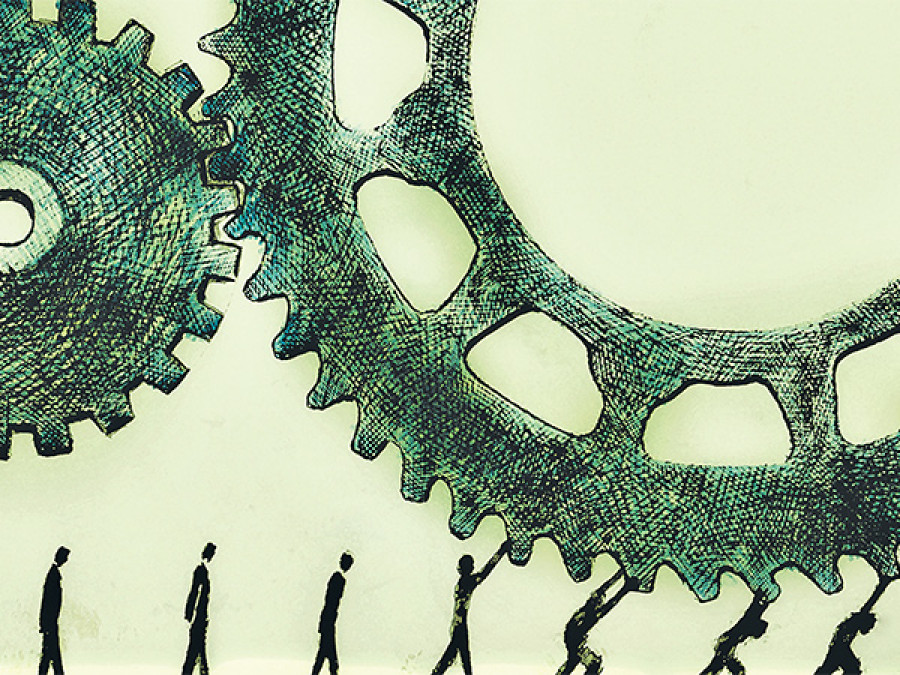Opinion
Piece it together
Dalit leaders cannot establish their agendas if they isolate themselves from other marginalised groups
Subhash Nepali
To hear Dalit leaders reiterate the high-caste leaders’ arguments for retaining the status quo is beyond logic. Dalit leaders seem to have forgotten that the men and women of their community have endured social inequality and oppression since ages. So, it is simply pointless to talk about social harmony without rectifying this entrenched social hierarchy that perpetuates structural violence. In this context, how can we awaken the Dalit leaders who have been hypnotised by the high-caste men?
Obedient followers
Political indoctrination is a lethal weapon. It slowly and subtly poisons the human mind with the values that the doctrinaires choose—the experience of the indoctrinated is forgotten; their consciousness is paralysed and an ideology replaces sound reasoning. The indoctrinated personalities can no longer think independently and decide for themselves.
Consequently, the Sushil Koirala government has not faced a strong resistance from the Dalits. Though the police ruthlessly beat up Dalit protestors on the streets of Kathmandu, their programmes were modest and non-threatening in nature. This is because Dalit leaders have still not challenged their political masters’ narrative of Nepal’s societal problems and the solutions to them: that the problems faced by the Dalits are related to class and can be addressed by economic development.
Kathmandu has instead faced more heat from the Madhesi and indigenous groups. So to address this challenge, the residents of Kathmandu have come up with a narrative that glosses over social hierarchy in the garb of social harmony. As Prime Minister Sushil Koirala must also appease his coalition partner, the CPN-UML Chairperson KP Oli and the status quoists of Kathmandu; he summoned his obedient followers, Dalit leaders, to his residence and gave them a sermon on Nepal’s history of ‘social harmony’.
Dalit leaders are now grateful to have been granted an audience with the prime minister of Nepal for such a farcical ‘dialogue’. Meanwhile, other agitating groups rejected this call accusing the ruling coalition of insincerity. In contrast to other groups, the Dalits had to endure police brutality to convince Kathmandu’s patronising civil society and the media to even gain access to the ruling class. Had they not suffered such violence, the prime minister might not have even agreed to meet with Dalit leaders. For, in the past, the prime minister avoided talking to them even after they accepted an invitation to his residence.
Immediately after the meeting with the prime minister, the obedient Dalit leaders quickly joined the ruling class in dismissing the demands of the agitating Tharus, Madhesis and Janajati groups. Their support was based on the bizarre argument that the marginalised groups were disrupting ‘social harmony’ while demanding their rights. Paradoxically, Dalits are the most marginalised of all groups in Nepal.
The wrong alliance
This move of Dalit leaders has predictably angered their natural allies while assuring their patrons that they are reliable puppets. After this shameless change of stance, Dalit leaders have joined the ranks of the high caste men who created numerous obstacles to the realisation of the rights of Dalits. The high caste men curtailed rights of the Dalits in the draft constitution and also the rights of the Nepali women to pass on the citizenship rights to their children in the name of national security.
Those men have now been rewarded for indoctrinating and intimidating Dalit leaders. In exchange, Dalit leaders have been allowed to register a proposal for amendments in the draft constitution. But the high-caste male leaders know that the 40 Dalit Constituent Assembly members, out of 601, cannot pass the amendment without the support of the Tharu and Madhesi CA members.
Furthermore, this move by Dalit leaders has greatly upset the Dalit community which considers the Tharus, Janajatis and Madhesis to be their natural allies. For example, the Dalits and Tharus, have similar aspirations. Both the communities want emancipation from slavery in different forms. While the Tharus were forced to work as Kamaiyas in the plains, the Dalits were exploited as Haliyas in the hills.
They both fought and lost their lives in huge numbers in the decade-long armed conflict against the Nepali state that nurtured those social ills. And it was through the cooperation with the Tharus, Madhesis and Janajatis that the Dalits were able to establish their rights in the Constituent Assembly.
The Dalit community had expected that the smashing of the lathis on the heads of Dalits by the police during the peaceful protest in Kathmandu would serve as a wake-up call to their leaders. That their leaders would then form an alliance with the marginalised groups and lend a support to their agendas in the CA. Sadly, this was not to be.
Uniting Dalits
The Dalit movement in Nepal is no less problematic. The Dalits constitute around 13 percent of the total population of Nepal—the Madhesi and Newari Dalits along with the five hill Dalit castes. The Dalit movement is currently weak due to the exclusion of Madhesi and Newari Dalits. The Madhesi and Newari Dalits have stronger ties with their respective ethnic communities than with the larger Dalit movement. This sums up the flawed decisions taken by the Dalit leaders that are taking the Dalit movement towards the wrong direction. As long as Dalit leaders continue to isolate themselves from other marginalised groups in Nepal, it is unlikely that they will succeed in mobilising the Madhesi and Newari Dalits. And one cannot help but wonder, what kind of awakening do the Dalit leaders need to understand this simple fact?
Nepali is a consultant based in Washington DC, the US




 7.12°C Kathmandu
7.12°C Kathmandu









%20(1).jpg&w=300&height=200)

